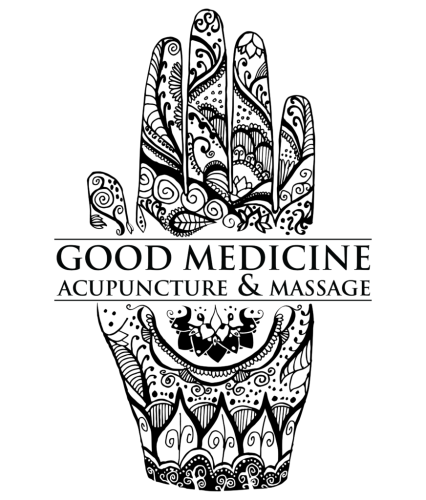To put it simply, cupping is an ancient Chinese therapy that targets areas of inflammation to reduce pain. But I’m sure you’re wondering: how does it work and why does it leave such weird marks on the body?
Cupping can be classified into three different styles: dry cupping, massage cupping, or wet cupping. They all leave the same telltale suction cup or cupping marks on the skin but vary slightly in their techniques.
Dry cupping: Cupping traditionally uses heat as the source of suction. A glass jar is heated (away from the body) and then the cooling of the cup against the skin causes suction to occur. Many clinics now have suction cups that can be used by pulling the air from the cup with a special device, rather than using heat. The cups are sometimes left on for as long as 10 minutes.
Massage cupping: Montana, one of our massage therapists describes massage cupping as:
Negative pressure in the body that separates the layers of tissue to allow for increased circulation and elimination of stagnation in the fluids and tissues.
During massage cupping (or glide cupping), the cup is moved gently around the affected area creating a “negative pressure” massage. The advantage of this is that blood is drawn to the area, increasing circulation and reducing inflammation.
Wet cupping: Wet cupping is similar to dry cupping, however, the therapist first cuts the skin. This not a common method of cupping since bloodletting of any sort is a biohazard. This should only be performed by a highly trained and licensed practitioner.
The suction cup pulls blood to the surface of the skin and increases blood flow. This increase of blood flow has a purifying effect on the tissues and can stimulate the release of tension and inflammation. The result of the suction is a sort of hickey mark that fades after a few days. Hence, the octopus wrestler appearance.
When should you get cupping?
Our therapists at Good Medicine typically recommend cupping when we see a patient that has chronic pain. We often get a patient in for a massage that is so stiff and knotted up that a whole session could be dedicated to one area. We have found that negative pressure, like with massage cupping or a dry cupping session, can release a lot of the tension and allow us to work the area more effectively, providing relief and relaxation.
Most acupuncture or massage clinics recommend cupping as a complement to another therapy. Cupping is a very effective technique for relieving pain but it is most beneficial when combined with a massage or acupuncture session.
What are the benefits of cupping?
Cupping has been found to be an effective method for relieving many types of damage or disease caused by inflammation including:
- poor blood flow
- congestion
- arthritis
- chronic neck pain
- chronic back pain
- anxiety
- migraines
- asthma
Is cupping safe?
Cupping has been around for literally thousands of years, with one of the earliest known references being mentioned in a 300AD text by a Taoist herbalist named Ge Hong. In recent years, cupping has been subject to many clinical trials and is proven to be effective for pain relief from a number of inflammation-related diseases and injuries.
As with any other form of therapy, cupping should only be performed by a trained acupuncturist or massage therapist. Having cupping done by an inexperienced practitioner could result in increased pain or infection.
While anyone who gets cupping done will appear to have hickey marks, these are typically not very sensitive or tender. It is not actual damage to the skin, it is stagnant fluid pulled from the soft tissue.
We advise that after a cupping session to cover the area and stay out of water. This is because the area has dilated blood vessels that could be exposed to pathogens if not kept clean and protected. While this is not a common issue, it is still something to be mindful of.
Would you like to get cupping done?
Schedule an appointment with our acupuncturist or massage therapist to experience cupping for yourself. You may find that it is the answer to your chronic pain! Call us today at (406) 926-1881. Still not sure? Read some stories from our previous clients on their cupping experience.
What was your experience with cupping like?
I have personally noticed a reduction in my chronic neck pain after only a few cupping sessions. I have always had the cupping done during a massage and it is very relaxing. I’ve had severe neck and shoulder pain for the last 10 years and the combination of acupuncture, massage and cupping as finally given me a break from all that pain.
Cassia Spurlock

Recent Comments